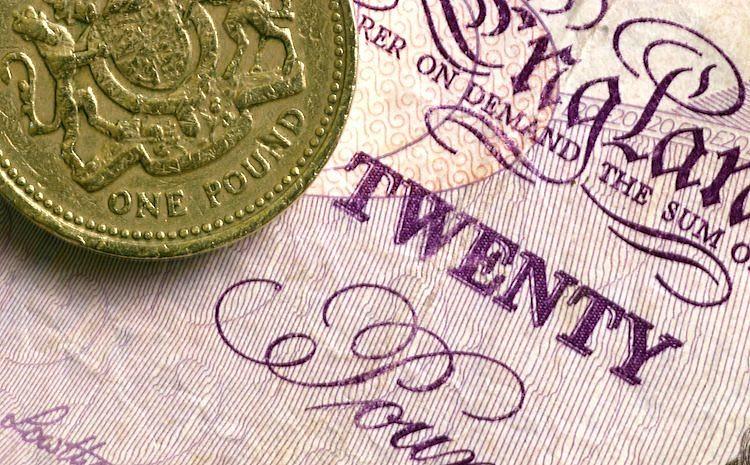
- The Pound Sterling rebounds from 1.2300 on robust increase in UK Services preliminary PMI for April.
- The UK preliminary Services PMI data surprisingly jumped to 54.9 from 53.1
- Two BoE policymakers are lined up to speak as investors seek clues about the interest-rate outlook.
The Pound Sterling (GBP) bounces back from 1.2300 in Tuesday’s early New York session as the S&P Global/CIPS has posted stronger-than-expected United Kingdom preliminary Services PMI data for April. Surprisingly, the Services PMI jumped to 54.9 from the prior reading of 53.1. Investors forecasted the Services PMI to drop slightly to 53.0. The preliminary Manufacturing PMI, surprisingly contracted, remains below the 50.0 threshold that separates expansion from contraction after expanding in March. The factory PMI falls sharply to 48.3 from expectations and the prior reading of 50.3.
The agency reported that lower output levels in the manufacturing sector were often linked to weak market conditions and customer destocking in response to reduced demand. In April, new business volumes increased across the private sector as a whole. The growth rate was the strongest since May 2023, but the expansion was centred on the service economy as manufacturers saw a moderate downturn in order books.
The GBP/USD pair recovers as strong Services PMI has fuelled strength in the Pound Sterling. Also, the decline in the US Dollar (USD) has provided some support to the GBP/USD pair. The US Dollar dips despite expectations that the Federal Reserve (Fed) will maintain interest rates at their current levels for longer. United States Consumer Price Index (CPI) has turned out hotter-than-expected in the first three months of the year and the county’s economic outlook is strong, suggesting that current interest rate framework is appropriate.
The US Dollar Index (DXY), which tracks the US Dollar’s value against six major currencies, edges down to 105.90. Meanwhile, investors will shift focus to the core Personal Consumption Expenditure Price Index (PCE) data for March, which will be published on Friday. The monthly core PCE Price Index is estimated to grow steadily by 0.3%. Annually, the underlying inflation data is expected to soften to 2.6% from 2.8% in February.
- The Pound Sterling bounces back after refreshing a five-month low near the round-level support of 1.2300 on upbeat UK preliminary Services PMI for April. However, its near-term outlook remains vulnerable as investors see the Bank of England (BoE) pivoting to interest rate cuts sooner than the Fed. Last week, BoE Deputy Governor Dave Ramsden said that United Kingdom inflation will decline faster than expected and return to the 2% target in May.
- Dave Ramsden said: “Over the last few months, I have become more confident in the evidence that risks to persistence in domestic inflation pressures are receding, helped by improved inflation dynamics,” Reuters reported. He added that inflation might prove weaker than BoE’s latest projections.
- Ramsden’s soft guidance on the inflation outlook has prompted expectations that the BoE will start reducing interest rates earlier than expected. LSEG’s (BOEWATCH) now prices 28 basis points (bps) of rate cuts in August and 56 bps in December versus 22 bps and 51 bps, respectively, at Friday’s close, Reuters reported.
- Contrary to Ramsden, BoE Chief Economist Huw Pill said in the Tuesday’s London session that the central bank has a reasonable way to go to get convinced that inflation will return sustainably to the desired rate of 2%. Pill added that risks are more skewed to reducing interest rates sooner. He further added that investors should not get too excited with decline in headline inflation.
- Market expectations for the BoE’s May policy meeting will be guided by commentaries from policymakers, as inflation data for the same month will be released after the interest rate decision.
The Pound Sterling printed a fresh five-month low near 1.2300 on Monday. The GBP/USD pair extends its losing spell for fourth trading session on Tuesday as a breakdown of the Head and Shoulder chart pattern formed on a daily timeframe has weakened the near-term outlook.
Declining 20-day and 50-day Exponential Moving Averages (EMAs) at 1.2525 and 1.2600, respectively, indicate that the long-term outlook is bearish.
The 14-period Relative Strength Index (RSI) oscillates in the range of 20.00-40.00, indicating a strong bearish momentum.
